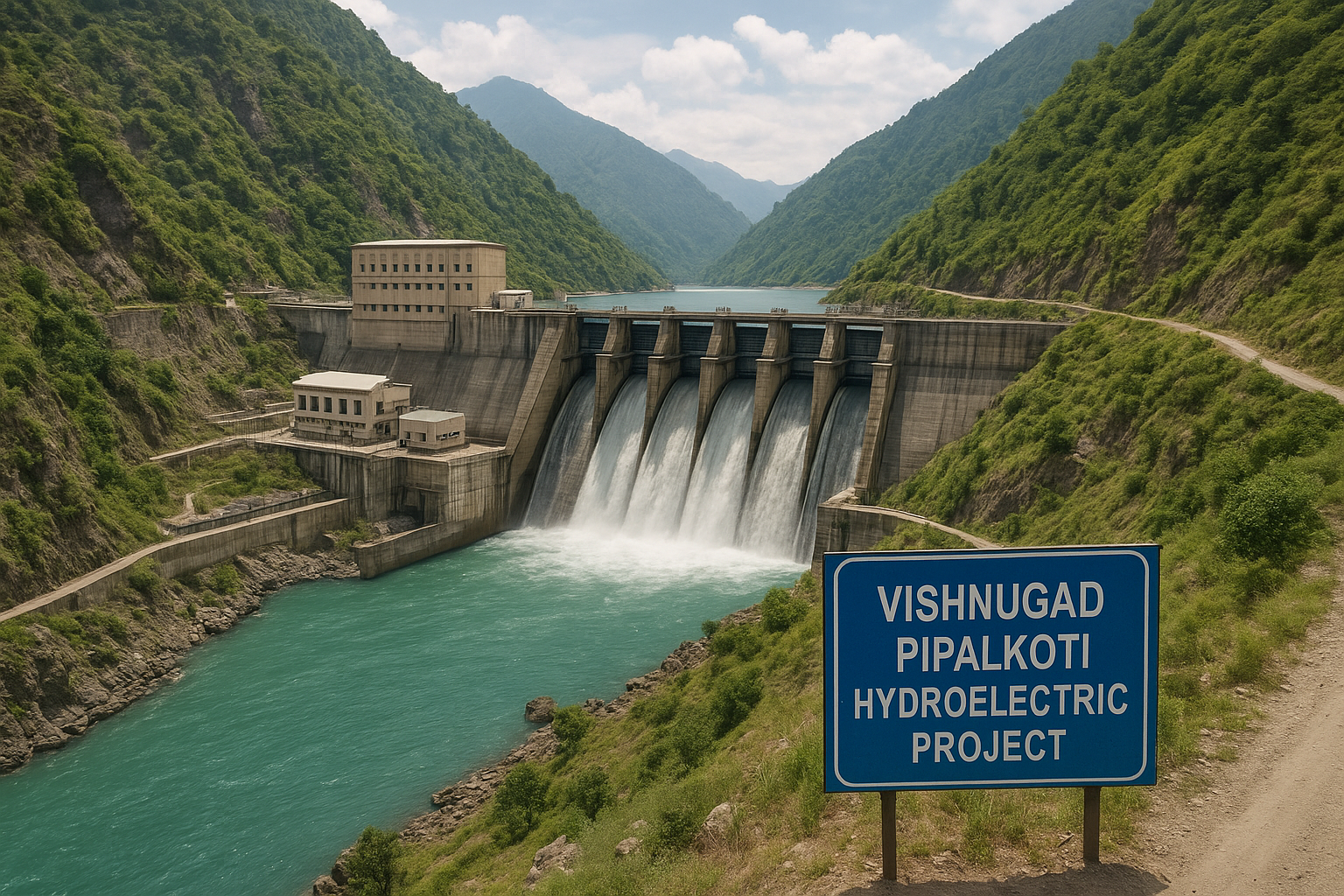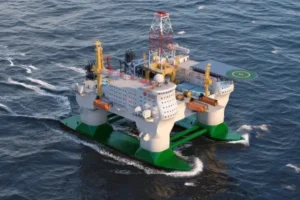Introduction
The Vishnugad Pipalkoti Hydro Electric Project (VPHEP) is a run‑of‑river hydropower scheme being developed on the Alaknanda River in Chamoli district of Uttarakhand, India. With an installed capacity of 444 MW (4 × 111 MW) and a gross head of approximately 237 metres, VPHEP is designed to provide peaking power to India’s Northern Grid while supporting local development through employment, infrastructure and targeted community benefits.
This article explains VPHEP’s technical design, financing and construction history, environmental and social measures, benefits and concerns, current status, and includes an SEO‑friendly FAQ to answer common queries.
Quick project snapshot
Name: Vishnugad Pipalkoti Hydro Electric Project (VPHEP)
Location: Alaknanda River, Chamoli district, Uttarakhand, India
Developer / Owner: THDC India Limited (THDCIL; formerly Tehri Hydro Development Corporation)
Installed capacity: 444 MW (4 × 111 MW)
Design energy: ~1,657 MU (annual design energy)
Scheme type: Run‑of‑river with limited ponding (diversion dam + headrace tunnels)
Gross head: ~237 m
Reservoir (gross): ~3.63 million cubic metres (live storage ~2.47 million m³)
Why VPHEP matters
Peaking power for the Northern Grid: The project adds flexible renewable hydro capacity that helps meet evening and seasonal peak demand.
Renewable energy contribution: As a hydropower plant, VPHEP displaces fossil generation and supports India’s clean energy targets.
Local development: Planned benefit sharing (including free electricity for project-affected households, local infrastructure and livelihood programs) aims to support communities in the project area.
Technical design and components
VPHEP is a classical diversion / run‑of‑river layout with the following key elements:
Diversion dam: A relatively low-height concrete dam to divert flow into intakes.
Intakes & desilting: Multiple intake tunnels feeding desilting facilities.
Headrace tunnels & pressure shafts: Long tunnels convey water from the diversion to the underground powerhouse; TBM and drill‑and‑blast methods have been used where geology permitted.
Underground powerhouse: Houses four Francis turbines of 111 MW each.
Tailrace and river return: After power generation water is returned to the Alaknanda.
Design parameters (head, storage and tunnel dimensions) were developed after detailed surveys and geological investigations and are implemented with construction and tunnelling contractors on site.
Financing and institutional partners
VPHEP has been supported through multilateral financing and central government arrangements, with the World Bank providing a substantial loan for project development. THDC India Limited is the implementing agency responsible for construction, operation planning and community engagement.
Timeline & current status (summary)
Planning & approvals: Project planning, feasibility and environmental clearances took place during the 2000s and early 2010s.
Construction start: Major civil works and tunnelling have progressed through the 2010s and 2020s.
Recent progress (2024–2025): Key civil works — including powerhouse excavation, dam works, and delivery of major equipment — have advanced substantially. Headrace tunnel and other works reported steady progress through late 2024 and into 2025.
Safety & geology: The Himalayan setting makes the project susceptible to landslides, debris flows and flash floods. Local incidents and remedial works have resulted in heightened geotechnical monitoring and additional protective measures.
Note: For the latest construction milestones or incident reports consult THDCIL project updates and World Bank implementation reports (links in sources).
Environmental and social safeguards
Large hydropower projects in fragile mountain environments require strong safeguards. VPHEP has implemented an Environmental Management Plan (EMP) and a Resettlement & Rehabilitation (R&R) framework that include:
Compensatory measures and monetary assistance for displaced families
Livelihood restoration programs and skill development
Community infrastructure (roads, schools, health centres)
Environmental monitoring (water quality, aquatic ecology, sediment management)
Disaster preparedness and slope‑stabilisation work
Several independent and Bank‑supervised reviews have recommended increased geotechnical monitoring, more extensive slope protection and community consultation to manage cumulative risk in the basin.
Benefits
Reliable peaking capacity that reduces pressure on thermal plants during high demand periods.
Grid stability through quick ramping capability of hydro turbines.
Local employment during construction and operations phases.
Infrastructure uplift for project‑affected villages through CSR and planned local investments.
Risks and controversies
Geological sensitivity: The Uttarakhand Himalaya is prone to landslides, rockfalls and extreme rainfall events. These risks require continuous engineering vigilance.
Downstream impacts: Changes to sediment transport and river flows may affect aquatic habitats and downstream users.
Safety incidents: Construction in steep terrain has led to incidents in the past; authorities have at times halted or modified works to implement remedial protection.
Community concerns: Resettlement and benefit‑sharing must be effectively implemented to maintain local support.
Good practice recommendations for Himalayan hydropower (relevant to VPHEP)
Adaptive design: Incorporate flexible operation and contingency plans for extreme events.
Enhanced monitoring: Continuous geotechnical, hydrological and environmental monitoring with real‑time alerts.
Community engagement: Transparent, participatory mechanisms for grievance redress and benefit distribution.
Ecosystem safeguards: Measures to protect fish passage, manage sediment and maintain environmental flows.
Climate resilience: Design interventions to cope with changing precipitation patterns and glacier‑related risks.
Conclusion
Vishnugad Pipalkoti is a strategically important 444 MW hydropower project that aims to strengthen renewable peaking capacity in India’s Northern Grid while delivering local development benefits. Its Himalayan location brings both high energy potential and elevated geological risk; success depends on sustained technical rigour, strong safeguards and active stakeholder engagement.
Frequently Asked Questions (FAQ)
Q1: What is the installed capacity of the Vishnugad Pipalkoti project? A: The project is designed for 444 MW (4 units × 111 MW each).
Q2: Where is VPHEP located? A: On the Alaknanda River in Chamoli district, Uttarakhand, India.
Q3: Who is building and operating the project? A: THDC India Limited (THDCIL) is the implementing agency and owner.
Q4: How much energy will VPHEP generate annually? A: The design energy is about 1,650–1,660 million units (MU) per year (approximate figure used for planning).
Q5: Is the project funded internationally? A: Yes — the project has received World Bank financing as part of its support package.
Q6: What are the main environmental concerns? A: Geological hazards (landslides, debris flows), sedimentation, impacts on riverine ecology and downstream flow alteration are primary concerns.
Q7: Has the project seen any recent incidents or delays? A: There have been site incidents in the past and corrective actions (including increased monitoring and protective works) have been implemented. For the latest incident reports check THDCIL updates and recent news coverage.
Q8: How will local communities benefit? A: Benefit measures include resettlement packages, livelihood restoration programs, local infrastructure investment and provisions such as free household electricity (as per project agreements).







